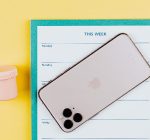The Importance of User Experience (UX) in Graphic Design
- 132 Views
- Blogger
- April 12, 2023
- Technology
User experience (UX) refers to a user’s overall experience while interacting with a product, service, or system. It encompasses all aspects of the user’s interaction, including usability, accessibility, functionality, and the emotional response the product or service evokes. UX design is the process of creating intuitive, user-friendly products that provide a positive experience for the user. It involves deeply understanding the user’s needs, goals, and behaviors and incorporating that understanding into the design process. Good UX design can increase user engagement, loyalty, and conversion rates.
The Relationship Between UX and Graphic Design
User experience (UX) and graphic design are closely related, and both play an important role in creating successful products. Graphic design focuses on the visual aspect of the product, such as layout, color, typography, and branding. UX design, on the other hand, considers the user’s overall experience with the product, including how it looks, feels, and functions. Good graphic design services can enhance the overall user experience by creating visually appealing and easy-to-understand interfaces, while good UX design ensures that the interface is intuitive, efficient, and meets the user’s needs. Both are essential for creating a successful product that users enjoy using.
Why UX is Important in Graphic Design
User experience (UX) is important in graphic design because it directly impacts how users interact with and perceive a product. A good user experience can increase engagement, loyalty, and conversion rates, while a bad experience can lead to frustration, abandonment, and negative word-of-mouth. Graphic design is an important component of UX design because it can create a visually appealing and easy-to-use interface that supports the user’s goals and needs. By considering the user’s experience throughout the design process, graphic designers can create products that are not only visually pleasing but also functional and user-friendly.
UX Design Principles Every Graphic Designer Should Know
Here are some UX design principles that every graphic designer should know:
- User-centered design: Focus on the user’s needs, goals, and behaviors throughout the design process.
- Consistency: Ensure design elements are consistent across the product to create a seamless user experience.
- Simplification: To reduce cognitive load, keep the interface simple and easy to use.
- Accessibility: Ensure that the product is accessible to users with disabilities.
- Feedback: Give users feedback on their actions to improve their understanding of the product.
- Flexibility: Allow users to customize the product to meet their individual needs.
- Usability testing: Test the product with real users to identify and address usability issues.
How UX Design Can Impact User Engagement and Conversion Rates
UX design can have a significant impact on user engagement and conversion rates. A good user experience can increase user engagement by making it easy and enjoyable for users to interact with the product. This can lead to increased time spent on the product and a higher likelihood of returning. Additionally, UX design can impact conversion rates by making it easier for users to complete desired actions, such as purchasing or signing up for a service. By creating a user-friendly interface that meets the user’s needs, UX design can help increase conversion rates and improve the overall success of a product.
The Role of User Research in UX Design
User research plays a crucial role in UX design for graphic designers. By conducting user research, designers can understand the user’s needs, goals, and behaviors, which helps guide the design process. This can include qualitative research, such as interviews and surveys, as well as quantitative research, such as data analysis and usability testing. User research can also help identify pain points in the user experience, which can be addressed through design changes. By incorporating user research into the design process, graphic designers can create products tailored to the user’s needs and are more likely to be successful.
Incorporating UX Design into the Graphic Design Process
Incorporating UX design into the graphic design services process is essential for creating a visually appealing and user-friendly product. This can be achieved by first identifying the user’s needs and goals through user research. Next, designers can create wireframes and prototypes to test and refine the design before finalizing the visual elements. Throughout the design process, designers should continually evaluate the product from the user’s perspective and make adjustments as necessary. By incorporating UX design into the graphic design process, designers can create products that are not only aesthetically pleasing but also meet the user’s needs and goals.
Measuring the Success of UX Design in Graphic Design
Measuring the success of UX design in graphic design services can be done through various metrics, such as usability testing, surveys, and analytics. Usability testing involves observing users interact with the product to identify usability issues and gather feedback. Surveys can be used to gather feedback on the overall user experience and to measure user satisfaction. Analytics can provide insight into user behavior, such as how long they spend on the product and how often they return. By using these metrics, designers can identify areas for improvement and measure the success of UX design in improving the overall user experience.
Common UX Design Mistakes Graphic to Avoid
Here are some common UX design mistakes that graphic designers should avoid:
- Designing for aesthetics over usability: Prioritizing visual design over user experience can lead to an ineffective product.
- Lack of consistency: Inconsistent design elements can confuse users and make the product difficult to use.
- Not conducting user research: Designing without a deep understanding of the user’s needs and goals can lead to a product that doesn’t meet their expectations.
- Ignoring accessibility: Failing to consider accessibility can exclude users with disabilities from using the product.
- Overcomplicating the interface: A complex interface can overwhelm users and lead to frustration.
- Not prioritizing user feedback: Failing to incorporate user feedback into the design process can lead to a product that doesn’t meet the user’s needs.
The Future of UX Design in Graphic Design
The future of UX design in graphic design focuses on creating personalized and immersive user experiences. With the emergence of new technologies like augmented reality (AR) and virtual reality (VR), designers have more opportunities to create interactive and engaging experiences. Additionally, designers are focusing on creating more accessible and inclusive products that accommodate diverse users. The use of machine learning and artificial intelligence (AI) is also expected to play a bigger role in UX design, enabling products to adapt to the user’s behavior and preferences. Overall, the future of UX design in graphic design is about creating meaningful and intuitive user experiences. READ MORE…





